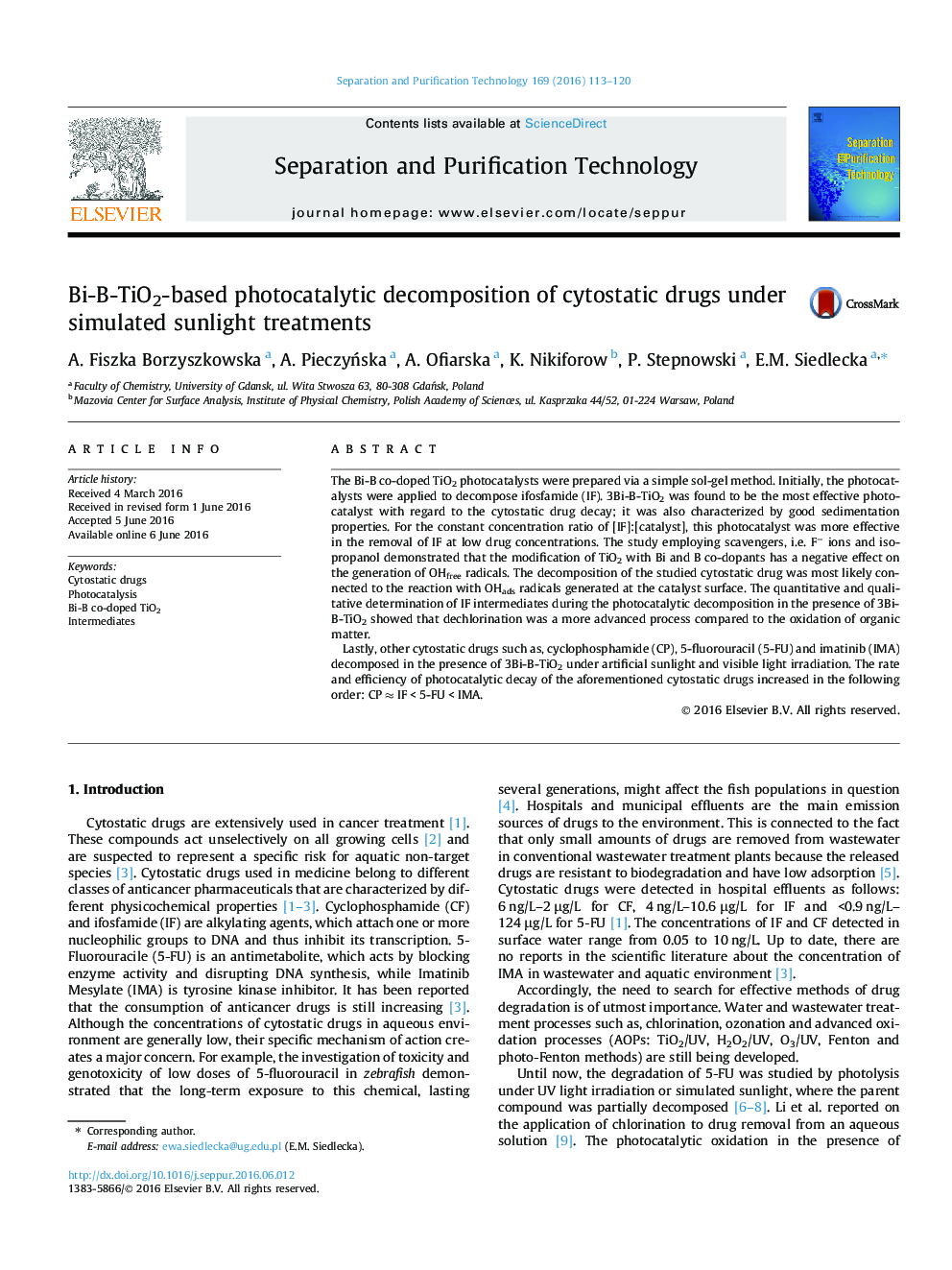| Article ID | Journal | Published Year | Pages | File Type |
|---|---|---|---|---|
| 639883 | Separation and Purification Technology | 2016 | 8 Pages |
•Four cytostatic drugs were photooxidized over Bi-B co-doped TiO2 under solar light.•The photocatalytic oxidation of IF was similar effective for 3Bi-B-TiO2 and TiO2.•Photocatalytic oxidation pathway of IF was different over 3-Bi-BTiO2 and TiO2.•Dechlorination in contrast to mineralization was effective over 3Bi-B-TiO2.
The Bi-B co-doped TiO2 photocatalysts were prepared via a simple sol-gel method. Initially, the photocatalysts were applied to decompose ifosfamide (IF). 3Bi-B-TiO2 was found to be the most effective photocatalyst with regard to the cytostatic drug decay; it was also characterized by good sedimentation properties. For the constant concentration ratio of [IF]:[catalyst], this photocatalyst was more effective in the removal of IF at low drug concentrations. The study employing scavengers, i.e. F− ions and isopropanol demonstrated that the modification of TiO2 with Bi and B co-dopants has a negative effect on the generation of OHfree radicals. The decomposition of the studied cytostatic drug was most likely connected to the reaction with OHads radicals generated at the catalyst surface. The quantitative and qualitative determination of IF intermediates during the photocatalytic decomposition in the presence of 3Bi-B-TiO2 showed that dechlorination was a more advanced process compared to the oxidation of organic matter.Lastly, other cytostatic drugs such as, cyclophosphamide (CP), 5-fluorouracil (5-FU) and imatinib (IMA) decomposed in the presence of 3Bi-B-TiO2 under artificial sunlight and visible light irradiation. The rate and efficiency of photocatalytic decay of the aforementioned cytostatic drugs increased in the following order: CP ≈ IF < 5-FU < IMA.
